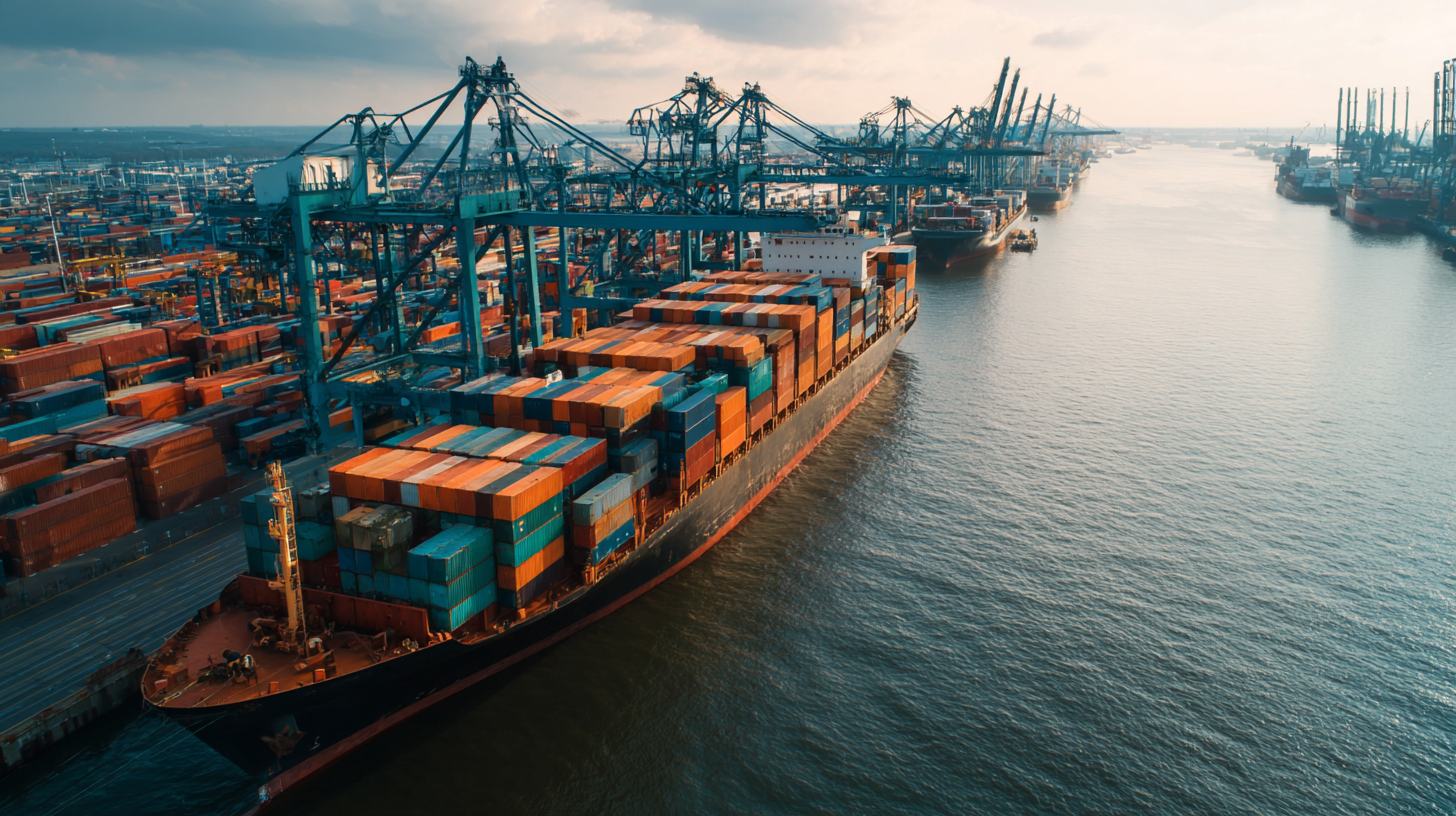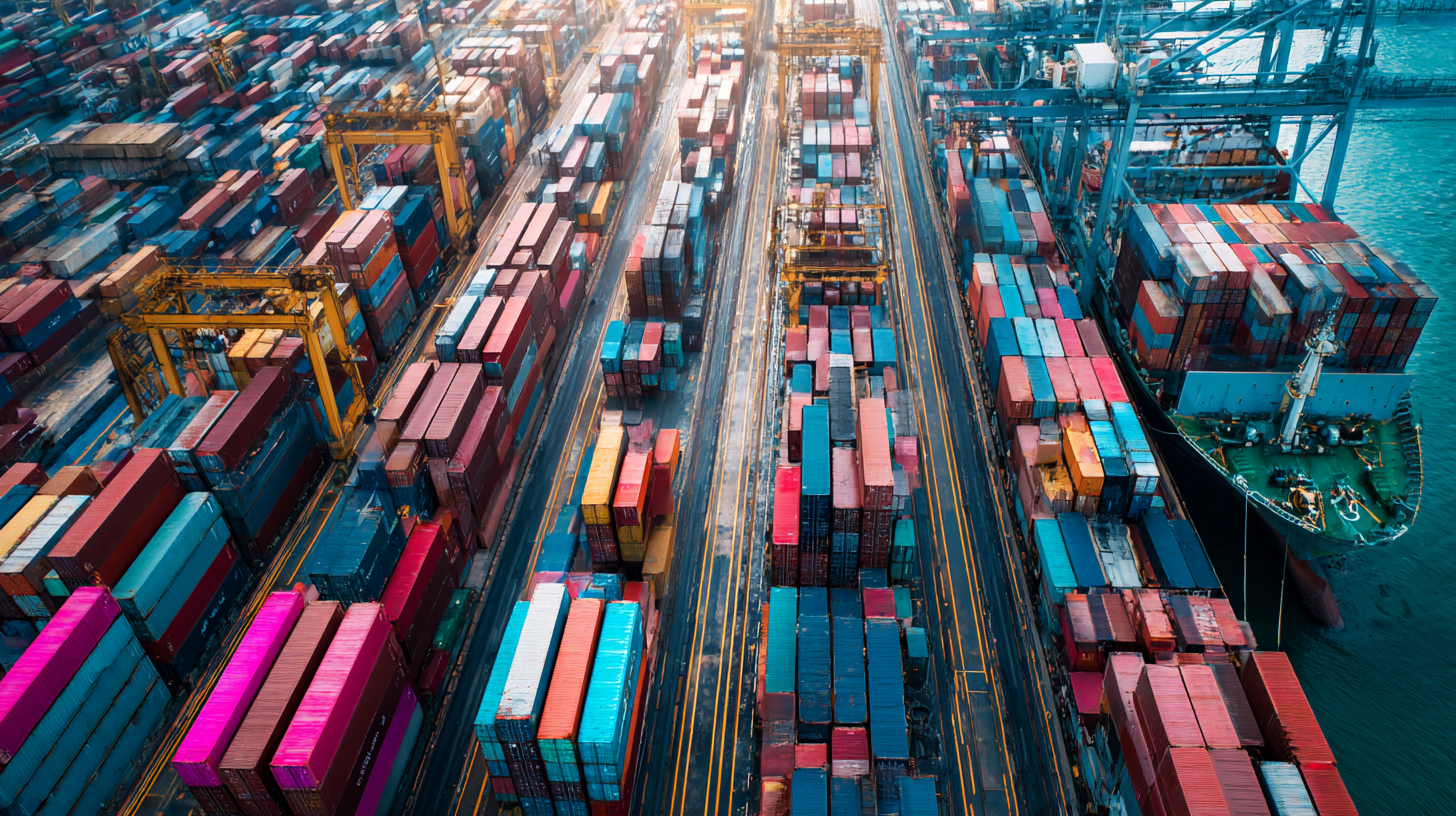Unlocking Global Supply Chains with Cross Border Bearing Procurement Strategies for 2024
In an increasingly interconnected world, global supply chains face unprecedented challenges and opportunities as we approach 2024. One crucial component often overlooked in the intricate web of international trade is the procurement of bearings, which serve as essential mechanical components in countless industries.
As companies strive to enhance their operational efficiency and reduce costs, the need for effective Cross-Border Bearing Procurement Services has never been more apparent.
This article explores innovative strategies tailored to navigate the complexities of international sourcing, ensuring companies can secure high-quality bearings while optimizing their supply chain. By unlocking these procurement strategies, businesses can not only mitigate risks associated with global trade but also position themselves competitively in a dynamic marketplace where agility and responsiveness are paramount.
Join us as we delve into the best practices and key considerations for successfully implementing cross-border procurement of bearings in the evolving landscape of 2024.

Innovative Cross Border Bearing Procurement Strategies to Enhance Supply Chain Efficiency
In 2024, the global supply chain management market is projected to grow significantly, reaching a size of $26.25 billion. By 2032, this figure is expected to climb to $63.77 billion, reflecting a robust compound annual growth rate of 11.7%. This growth trend underlines the critical importance of innovative procurement strategies, particularly in the cross-border bearing market, which is increasingly vital for enhancing supply chain efficiency. Companies are recognizing the need to adopt digital transformation strategies to maintain competitiveness in an ever-evolving global landscape.
Recent reports emphasize the surge in cross-border e-commerce and the accompanying demand for resilient supply chain solutions. According to a 2025 global cross-border e-commerce supply chain trend report, external factors such as market fluctuations and the advancements in intelligent technologies are driving this shift. As businesses navigate these complexities, adopting innovative cross-border bearing procurement strategies will be essential for optimizing logistics, ensuring sustainability, and fostering international collaboration. These strategies not only enhance operational efficiency but also mitigate risks associated with supply chain disruptions in today's interconnected world.

Impact of Global Trade Policies on Bearing Procurement for Supply Chain Resilience
As global trade policies evolve in response to shifting economic landscapes, bearing procurement strategies must adapt to ensure supply chain resilience. The interplay between tariffs, trade agreements, and regulatory standards can significantly influence the cost and availability of bearings essential for various industries. Companies that proactively analyze and navigate these policies can enhance their procurement processes, reduce vulnerabilities, and capitalize on emerging opportunities.
Moreover, embracing technology and data analytics becomes increasingly vital in identifying alternative supply sources and optimizing procurement decisions. By maintaining flexibility and fostering relationships with a diversified network of suppliers across borders, companies can mitigate risks associated with geopolitical tensions and supply disruptions. This resilience not only protects against immediate market fluctuations but also positions businesses for sustained growth in a competitive global market.
Unlocking Global Supply Chains with Cross Border Bearing Procurement Strategies for 2024
| Region |
Bearing Type |
Procurement Strategy |
Average Lead Time (Days) |
Impact of Trade Policies |
Risk Level |
| North America |
Industrial Bearings |
Local Sourcing |
15 |
Moderate |
Low |
| Europe |
Automotive Bearings |
Cross-border Bulk Purchase |
20 |
High |
Medium |
| Asia |
Precision Bearings |
Supplier Diversity |
25 |
Low |
High |
| South America |
Marine Bearings |
Direct Importing |
30 |
High |
Medium |
| Africa |
Heavy Duty Bearings |
Collaborative Sourcing |
40 |
Moderate |
High |
Leveraging Digital Platforms for Streamlined Global Bearing Acquisition in 2024
In 2024, the global landscape of bearing procurement is set to transform significantly with the advent of digital platforms. These technologies enable businesses to streamline their acquisition processes, ensuring quick access to suppliers across borders. With enhanced visibility into supply chains, companies can make informed decisions that not only reduce costs but also optimize inventory management. By utilizing sophisticated online tools, procurement managers can track market trends, assess supplier capabilities, and manage logistics more efficiently than ever before.
**Tips:** Leverage data analytics tools available on these digital platforms to pinpoint the best suppliers based on reliability, price, and delivery times. Emphasizing transparent communication via these technologies will also help in building stronger relationships with suppliers.
Additionally, integrating e-commerce solutions can facilitate smoother transactions, allowing for faster turnaround times in procurement. Businesses should look into platforms that support real-time updates on shipping and order status to eliminate bottlenecks. As companies adopt these innovative strategies, they will not only enhance operational efficiency but also foster a more resilient supply chain to navigate the complexities of the global market.
**Tips:** Always conduct regular reviews of supplier performance through the digital platform metrics to ensure ongoing compliance with your standards, leading to continuous improvement in procurement practices.
Global Bearing Procurement Strategies in 2024
This chart illustrates the projected adoption rates of various digital platforms for global bearing acquisition strategies in 2024. The data reflects the increasing trend towards utilizing technology to streamline cross-border procurement processes.
Analyzing Cost-Benefit Metrics of Diverse Sourcing in Bearing Supply Chains
In 2024, the global bearing supply chain faces considerable pressure due to market fluctuations and geopolitical uncertainties. Diverse sourcing strategies are increasingly recognized for their potential to optimize supply chains. According to a recent report by the Global Bearing Alliance, companies that implement a multi-sourcing approach experience a 20% reduction in supply chain disruptions, ultimately leading to enhanced operational resilience. This approach not only mitigates risks but also encourages competitive pricing, as suppliers vie for contracts over a broader base.
Furthermore, analyzing cost-benefit metrics reveals that companies utilizing cross-border procurement of bearings can achieve significant savings. A supply chain analysis published by Market Insights found that firms employing diverse sourcing strategies report a 15% decrease in material costs. Additionally, the integration of technology in supply chain management allows for real-time assessment of supplier performance and cost variations, enabling companies to make informed decisions swiftly. This trend highlights the necessity for businesses to adopt adaptive procurement strategies that not only focus on cost efficiency but also prioritize supply chain agility in an ever-changing global landscape.
Future Trends in Sustainability and Compliance for Cross Border Bearing Procurement
As we move into 2024, the landscape of cross-border bearing procurement is evolving rapidly, driven by increasing demands for sustainability and compliance. Stakeholders are recognizing that sustainability is not just a trend but a crucial component of procurement strategy. Organizations are now expected to implement practices that reduce environmental impact while ensuring efficient supply chains. This involves prioritizing suppliers that adopt green manufacturing processes and adhere to international environmental standards.

In addition to sustainability, compliance with regulatory frameworks has become a critical focus. The complexity of international laws requires companies to stay informed about changes in trade regulations and standards governing the bearing industry. By integrating robust compliance measures into their procurement strategies, businesses can mitigate risks and enhance their reputation in the global market. This dual emphasis on sustainability and compliance not only fosters responsible sourcing but also strengthens supply chain resilience, ensuring that organizations are well-positioned to navigate the challenges of a competitive marketplace.

Home
Products
Industrial Bearings
Deep Groove Ball Bearings
Self-Aligning Ball Bearings
Angular Contact Ball Bearings
Cylindrical Roller Bearings
Taper Roller Bearings
Spherical Roller Bearings
Bearing housing or Accessories
Miniature Bearing
Thrust ball bearing
Radial Spherical Plain Bearing
Pillow Block Bearing
Needle Roller Bearings
Automotive Bearings
Agricultural Bearings
Special Material Bearings
Industry Application
About Us
News
Contact Us











